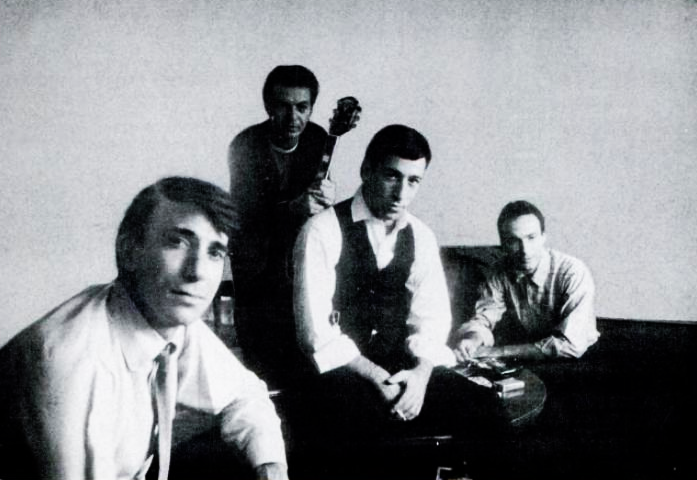The Byrds are among the greatest bands in
the history of American pop music. The band is the original folk-rock outfit
and was the first band to play country-rock. Pioneered by folk singer turned
rocker, Roger McGuinn, the Byrds saw many lineup changes throughout the years,
but despite the turnover of musicians, the band always produced original and
inspired music. Originally called the “Beefeaters,” the Byrds formed in early
1964 with members, McGuinn on guitar; David Crosby on guitar; Gene Clark on
guitar; Michael Clarke on drums; and Chris Hillman on bass.
The Byrds “jangly” sound was derived from
McGuinn’s 12-string Rickenbacker guitar. This trademark sound was in full
evidence on their first album, “Mr. Tambourine Man” (1965). The album opens
with the title track, a rocking hit version of the Bob Dylan classic. Dylan
songs would be covered often by the Byrds and be infused with that unmistakable
Byrds sound.
The Byrds next recorded the very solid,
“Turn, “Turn, “Turn” album in 1965. The title track of this album also became a
big hit.
Two excellent albums came next: “Fifth
Dimension” (1966) and “Younger than Yesterday” (1967) spawning hits with “Eight
Miles High” and “So You Want to Be a Rock and Roll Star,” respectively.
It was at this point, seemingly at the peak
of the band’s commercial and critical success, when Gene Clark and David Crosby
departed to pursue solo careers. For their next project, “The Notorious Byrd
Brothers” (1968), the band was reduced to a trio. No matter it seems when the
listening to the result-a brilliant album of stunning experimental music. The
album is inspired from start to finish, especially on numbers like, “Draft
Morning,” “Wasn’t Born To Follow,” “Natural Harmony,” and “Get to You.”
Now a trio, the Byrds added new members,
country-hippie Gram Parsons from the International Submarine Band and the
superb country guitarist Clarence White. With the overt country influence of
its new members, the Byrds produced the first true country-rock album, the
excellent “Sweetheart of the Rodeo” (1968). Parsons soon left the band to form
the Flying Burrito Brothers.
The Byrds had reached the peak of their
creative powers and would continue to record until 1973, but only the
“Untitled” album released in 1970 would approach the heights they achieved in the
Sixties.
%5B1%5D.png)








